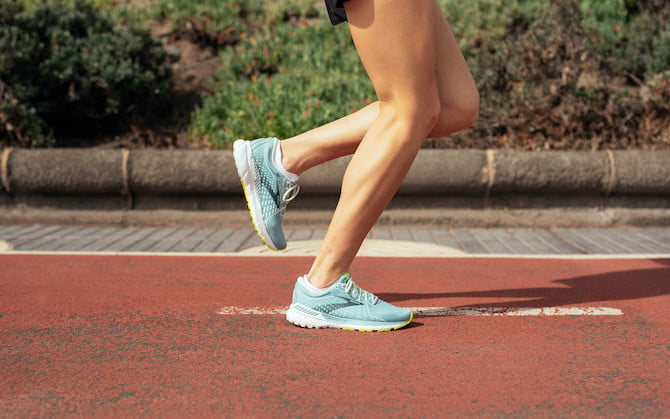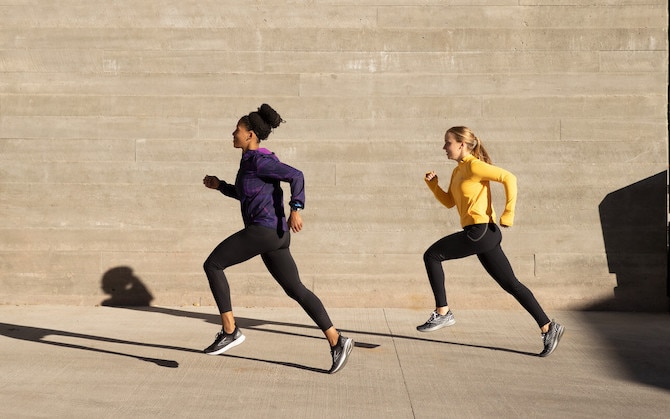Understanding shin splints

Shin splints can be common among new runners. But worry not — this dull pain in the front of your lower legs is also avoidable. Here are a few simple tips on how to prevent shin splints so you can focus on your running journey.
What are shin splints?
Before we talk about how to prevent shin splints, it's important to be clear about what they actually are. At the most basic level, shin splints — or if you're feeling fancy, medial tibial stress syndrome — occur when your lower legs are stressed beyond what they're able to bear. As a result, the tissues swell and feel tender.
What does this mean for prevention? Essentially, all prevention efforts are going to focus on protecting your legs from becoming overworked. For short-term relief, the most important factors are rest and ice. Simply give your shins a break, and ice them to reduce inflammation. To help prevent shin splints from recurring, however, you'll want to focus on form, gear, and your overall exercise regimen.
Check your running form.
Like all other types of exercise, healthy form is vital to running. Your muscles and joints are intended to function together in pretty specific ways, and if just one of those parts isn't in line, everything can be affected.
The first step to preventing shin splints, then, is to make sure your form is as close to "perfect" as possible. I put "perfect" in quotes because there's no ideal way to run; everyone does it a little differently. However, there are some universal aspects to good running form.
If you have the opportunity, a formal video analysis of your running form can be extremely enlightening. If you don't have access to a qualified running expert who can check your form for you, though, there are other means of getting this done.
Primarily, listen to your body. Since everyone's form is a little different, take the time to learn what feels right for you. You should be able to run relaxed and without pain. If you have to strain or experience any sort of pain, something is wrong. I like to go through a little mental checklist periodically during my runs:
- Head upright and leaning slightly forward
- Shoulders and arms relaxed
- Core engaged
- Feet landing under your knees

Find the right shoes for you.
The humble shoe is a runner's main tool. Your shoes should provide the right amount of cushion for you while also encouraging proper form. In addition to the form considerations mentioned above, your shoes can have a major impact on your strike pattern (the way your foot touches the ground). While this particular aspect of running technique is hotly debated, many experts agree that landing on your heel increases your risk of shin splints and other injuries.
What does this have to do with shoes? Heavy or thickly cushioned shoes often encourage a heel strike — when your heel hits the ground first — so instead, find a shoe that offers comfort but also supports how your body naturally moves.
And in their heroic efforts to protect you, those shoes go through a lot of punishment. As much as you might come to love your shoes, they should be replaced for a fresh pair roughly every 640 kilometres.
Mix up your workout routine.
Runners run. But they should also cross-train. Remember, preventing shin splints is about protecting your shins from being overworked. An effective way to do this is to increase the amount of work they can safely do. For that, strength training is a great solution that can give your shins a break from the impact of running.
By including a well-designed strength workout in your routine, you can increase the strength and stability of your core, hips, and legs. This will better prepare your legs to handle the stress of running.
Ultimately, there are many ways to relieve shin splints. The key thing to consider when thinking about how to prevent shin splints Understanding how you can lessen the amount of stress your legs experience each time you run
Our writer's advice is intended for informational or general educational purposes only. We always encourage you to speak with your physician or healthcare provider before making any adjustments to your running, nutrition, or fitness routines.

